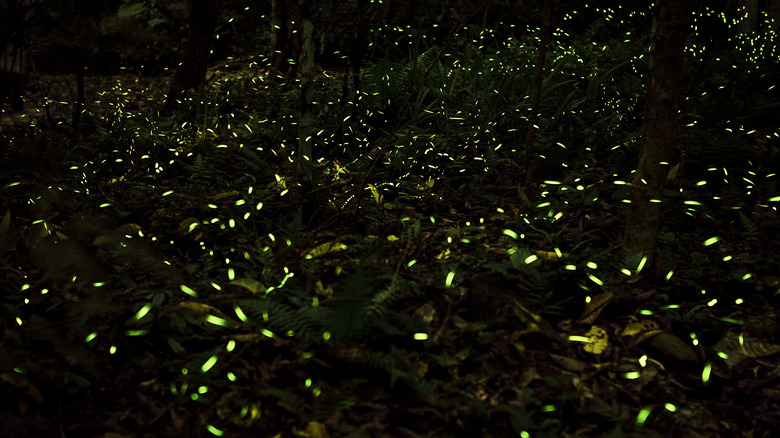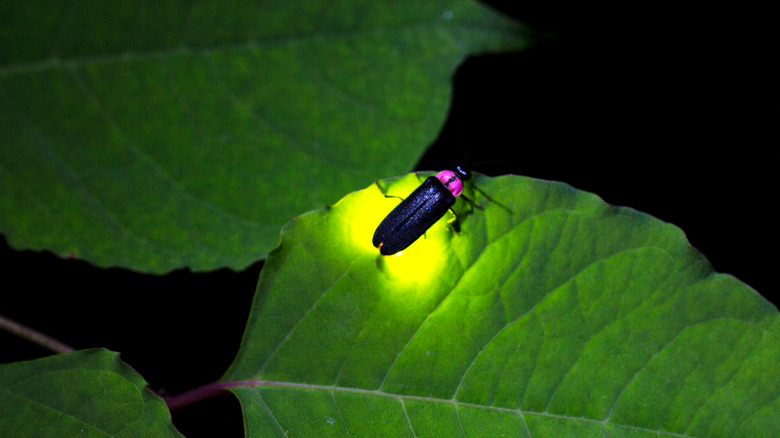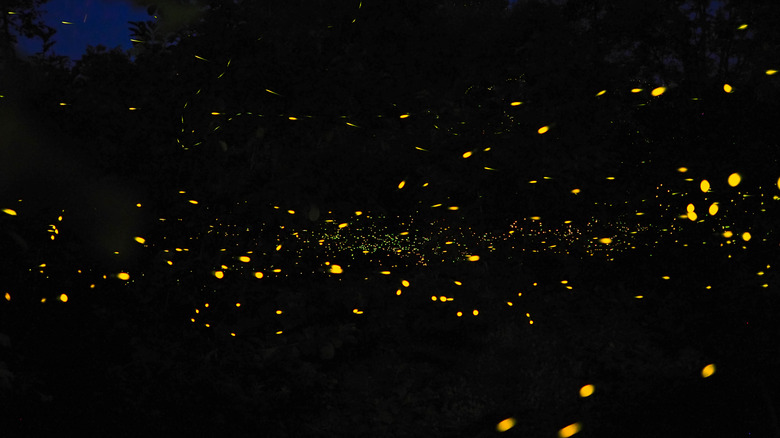Why Some Fireflies Synchronize Their Flashing Lights
Fireflies can be found in many areas of the United States and in many other countries around the world. But what species you find can vary, based on region. The color of their lights and the patterns they use to communicate will be different, and some won't even light up at all.
The light they emit comes from a chemical reaction they create themselves, according to the National Park Service. They take oxygen and mix it with chemicals in their abdomens, and the result is a bright flash of light that allows them to communicate. Each species of firefly relies on a specific flight pattern to communicate with others of its kind. The ones you see in your backyard likely create something close to an upside-down "J" in the air, according to Science.
By seeking out the right flight patterns, fireflies can make sure they're finding compatible mates. A few select species have opted for a much harder method for identifying each other: flashing in unison (via National Park Service).
What is synchronous flashing?
For just two weeks in early summertime, a species of firefly called photinus carolinus puts on a spectacular light show in the Great Smoky Mountains. The males will take to the air and light up in unison, searching for female mates on the ground below (via National Park Service). The photinus carolinus isn't the only species to use this trick, but they're one of very few. It's so rare — and popular with tourists — that the National Park Service puts on a lottery to limit the number of visitors coming through to see it.
Male fireflies will light up a foot or two above the ground, and search for a corresponding double-flash in the grass below from a female seeking a mate (via Firefly). There's no definite answer for why they've evolved to flash synchronously, according to Science, but researchers have an idea.
"The firefly display is all about courtship," National Park Service Entomologist Becky Nichols told Science. "It's their way of finding each other and recognizing it's the same species."
How does it work?
Watching the sudden wave of lights appear might seem like magic. Fireflies can't talk to one another to coordinate what time they light up, so it's not as though there's a countdown to follow. Scientists have examined the circumstances that lead to synchronous flashing, though, and come to a few conclusions about how it works. The main thing is density, according to The New York Times. Enough fireflies have to gather in a certain area for the effect to happen at all.
According to The New York Times, there's no head firefly that sets the pace or tells everyone to glow. Instead, one random firefly might light up and start a sort of ripple effect through the rest of the gathered swarm until they've all lit up at once (via The New York Times). Once they've all stopped glowing, it's time to start again. It's a little like when sports fans do the wave at a stadium, although fireflies move a little faster.


